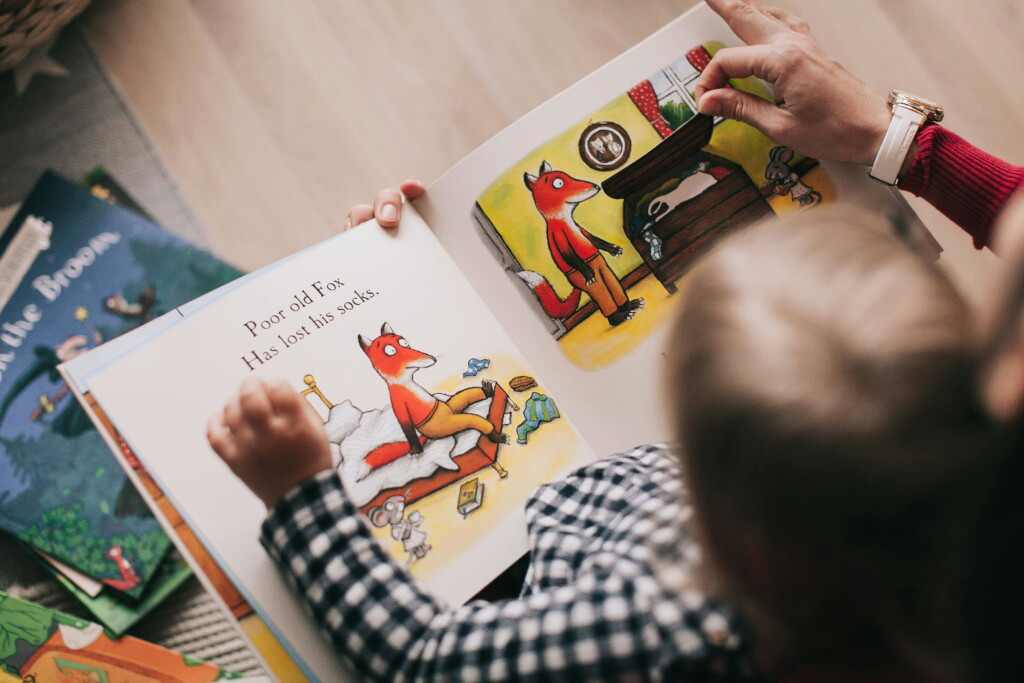
As parents, we all know the benefits that reading has to offer. For some of us, it is not only an educational tool but also a source of immense pleasure that enriches our lives.
Unfortunately, today’s children often view reading as a chore rather than a pleasure.
Experts say that the decline in reading among youth is due to the shift from a text-based culture to an image-based one, where ten-second videos or memes* capture our attention more easily than a book.
However, the issue may also stem from our failure to provide children with the foundational reading skills necessary to find pleasure in reading.
In this article, we will discuss three essential skills that will help your child learn to love reading.
Tip #1: Before the word, there is the sound: Phonics
Phonics is simply a method of teaching people to read by correlating sounds with letters or groups of letters in an alphabet.
Phonics is normally taught in kindergarten or first grade. It’s important to teach how to pronounce letters and words at that level since children’s first exposure to language is listening and sounding out words.
Mom: “Say Ma-Ma”
Child: “Ma-Ma”
When a child is taught phonics well, three things will happen:
- The child will understand the relationship between letters and sounds.
- He or she will be able to sound out words and their correct pronunciation, which will allow them to expand their vocabulary.
- The child will have fewer obstacles to comprehension in reading.
Even though most schools have a good phonics program, the temporary shift to classroom teaching on Zoom because of the pandemic has left a lot of children with gaps in their phonics.
We often hear this from parents who visit our learning center after their child has taken our free assessment.

Tip #2: Mastering Grammar: Starting with the Parts of Speech
Our level of interest in reading, let alone writing, can suddenly drop to zero when we hear the word grammar.
Imagine how your child reacts to phrases like present perfect, future perfect, or infinitive.**
We may conclude that grammar is too difficult to learn, and only the smart ones can grasp the concepts or rules. However, there may have been a missing step in learning grammar that created a barrier, and that may be the parts of speech.

Parts of speech are the family of words that each have a function in a sentence. For example, below is a list:
- lazy: adjective
- jump: verb
- dog: noun
- The: article
- over: preposition
- Jill: proper noun
When a child knows the function of each part of speech, he or she gains certainty in writing a simple sentence like, “The lazy dog jumped over Jill”.
But when there is less certainty and the rules of grammar are unknown, the chances of finding pleasure in reading diminish.
Tip #3: Give meaning to words by looking them up
Of all the tips we have shared with you so far, the third one is the most important.
Reading, at its core, involves engaging in communication with another person.
Right at this moment, I am communicating with you through my careful arrangement of words.
I am assuming you understand everything I have said so far, but if there is one or more words you do not fully understand or have a different definition for, you may start to feel confused and eventually lose interest in my communication.

The same thing happens to a child when they’re given a book to read with many unfamiliar words.
Here’s a scenario that all too often happens when the spark of interest in reading starts to wane:
A child is curious to read a book about the adventures of a young boy who goes to school for wizards. The child begs his parents to buy him the whole set of books. He gets them. Not having finished the first book, the entire collection is tucked away in a corner or on a shelf, gathering dust.
As a parent, has this happened to you?
The idea of giving your child plenty of books to get them interested in reading is a wonderful idea and a good way to engage your child in stories, both in reading and in writing them. The trick is to make certain that this volume of books is at a level that is easily read by your child.
The real solution to this is one that we incorporate into our tutoring.
It consists of a) providing your child with reading material that is approachable and b) teaching him the skills to recognize letters and sound out words, thereby connecting them to the printed word, and finally, c) teaching him how to find the definitions of words in a dictionary so he can clarify the meaning of the overall text he is reading.
We hope the tips we have shared will help you foster a love of reading in your child. If you want to know more about our reading program or schedule a free assessment, call us.
* Meme: an image, video, piece of text, etc., typically humorous in nature, that is copied and shared
** Present perfect: The present perfect tense is an English verb tense used for actions related to or that continue into the present. It’s easily recognized by the auxiliary verbs (or helper verbs) “have” and “has,” as in, “I have gone fishing since I was a child.”
Future perfect: a tense of English verbs expressing expected completion in the future, as in: “By June, I will have done 100 hours of exercise.”
Infinitive: the basic form of a verb before changing it to agree with who is speaking or the time.
For example, infinitives include to run, to jump, to speak, to walk, and to hike, as opposed to the form of the verb that changes with the speaker or with time: I run; you run; he, she, it runs; (change of speaker) I ran; you ran; he, she, it, ran (change of time)

